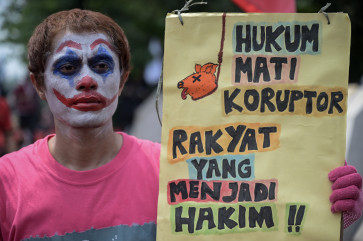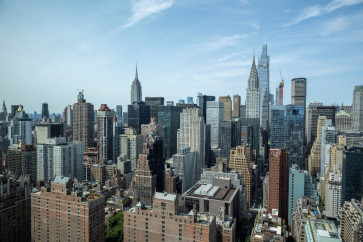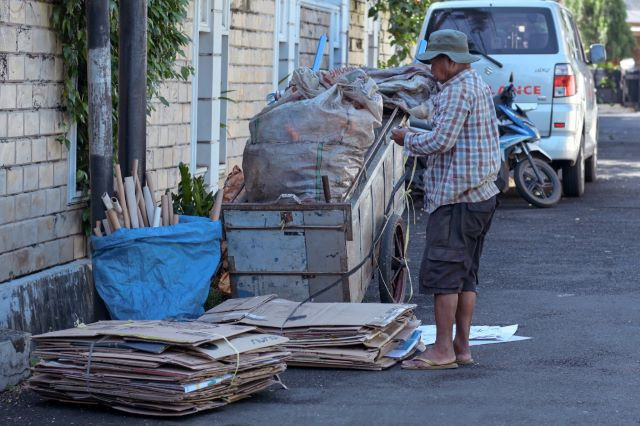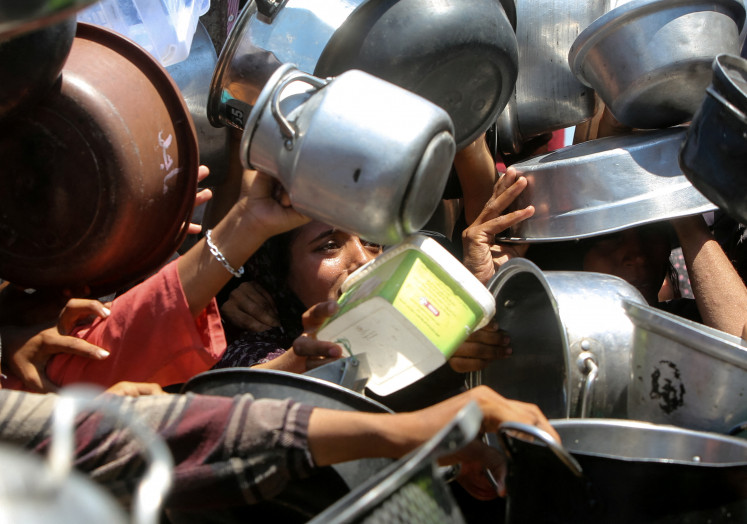Popular Reads
Top Results
Can't find what you're looking for?
View all search resultsPopular Reads
Top Results
Can't find what you're looking for?
View all search resultsMangrove damage worsens in Cirebon
Mangrove: Hundreds of hectares mangrove being seriously damaged in Cirebon
Change text size
Gift Premium Articles
to Anyone
M
span class="caption" style="width: 378px;">Mangrove: Hundreds of hectares mangrove being seriously damaged in Cirebon. Antara/Septianda PedanaDamage to mangrove forests in the northern coastal area of Cirebon, West Java, has worsened, with hundreds of hectares being seriously damaged in the past 10 years.
This has raised concerns among environmentalists over fears that it will result in abrasion and threaten marine life in shallow waters in the area.
“This is concerning because shallow water marine life can be an alternative solution for fishermen when they can’t go deeper out to sea during stormy weather like presently,” environmentalist Yoyon Suharyono said late last week.
Yoyon, who is also the chairman of the West Java Environment and Workers Foundation (YBLH), said that mangrove forests could be used as a buffer zone to protect against the economic life of fishermen and other coastal communities.
Mangrove forests, according to Yoyon, are the best habitat for coastal marine life such as shrimp, crabs and scallops, which the fishermen can catch to earn a living during stormy weather.
Damage to mangrove forests, therefore, threatens these sources of livelihood and could later force fishermen to try to earn a living by doing jobs that they have not mastered, such as by working as manual laborers. “This is ironical for a maritime country,” Yoyon said.
Of the total of 61 kilometers of Cirebon coastal line – 53 kilometers of which are in Cirebon regency and the remaining 8 kilometers in Cirebon municipality, — less than 10 kilometers are still covered with mangrove trees.
Yoyon blames the damage on mangrove clearance by locals who are mostly economically poor. They started to do so en masse in the 1980s to open new fish ponds as a result of a boom in shrimp cultivation.
Scarcity of kerosene and its skyrocketing price since 2005, he said, further contributed to the damage, as people illegally logged the mangroves to use as firewood. Others felled them to use the wood to build houses.
The worst mangrove damage, Yoyon said, could be found along Losari Beach, amounting to some 50 hectares of forest. The rest was spread along the Gebang, Mundu and Kapetakan beach areas.
“If nothing is done, it could be disastrous,” Yoyon said.
The head of the Cirebon Municipal Marine and Fishery Agency’s marine section, Dedi Supardi, confirmed the damage, saying it was a result of illegal logging and domestic waste pollution.
“Domestic waste contributes a great deal to the damage of mangroves. Plastic and detergent waste reach the sea and create sediments in the coastal areas,” he said on Saturday.
He added that domestic waste could be found up to 4 miles inland in the municipality, contributing to the fast damage of the ecosystem in the coastal and shallow sea regions.
“Cirebon fishermen now find it difficult to catch fish and other sea life in those areas,” Dedi said.










